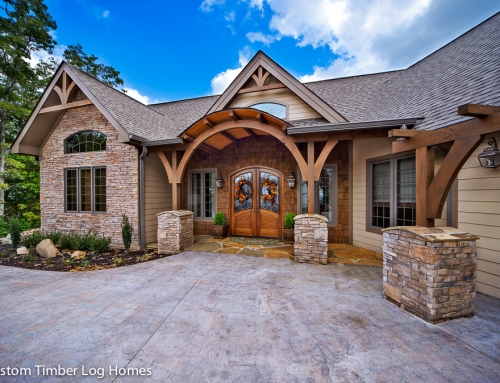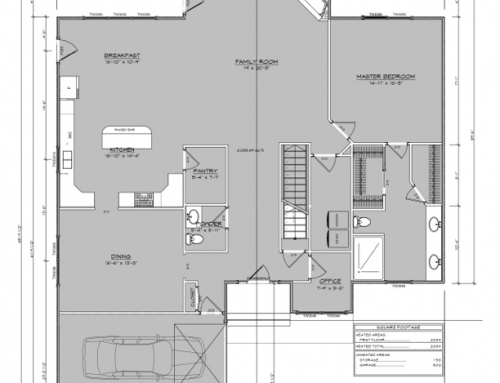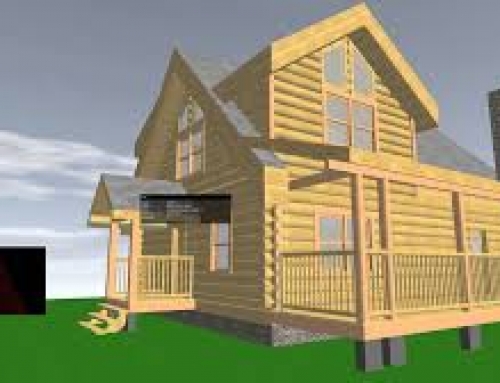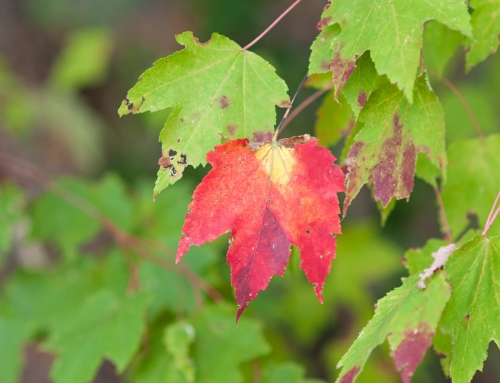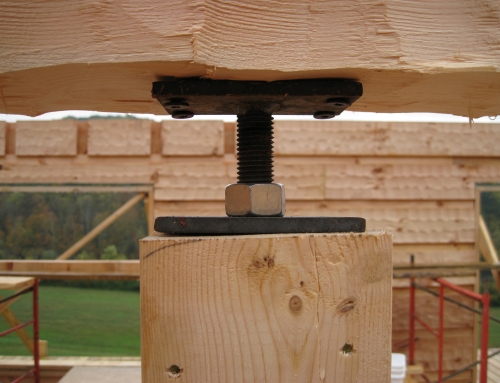
We received a question last week about log rot on a log home constructed in or around 1980. While it is not a common problem to have log home decay, if proper stain and maintenance are routinely being preformed, sometimes a quick tip can make all the difference. After we had a chance to see the logs in question, it became obvious what caused the problem.
Two things that seemingly go together like beans and cornbread, or peas and carrots, are log homes and fireplaces. While those things go together well, storing firewood against a home can be a bad idea. Moisture from rain or snow and ice, can build up and remain trapped for very long periods of time. While our caller had placed firewood on the porch of his log home using a firewood rack, and he left a small amount of space in between the firewood and the home, he also constructed a “make-shift” metal roof and attached it directly to the log wall. This, in itself, would have been fine, since he notched and caulked the log properly; but, after his stack grew higher, his metal roof became inverted and aimed the water back at the log wall. This was hidden for a long period, due to a stored tarp cover, and while the water was held against the log for a few seasons or more, the log quickly lost the fight with the elements and became more and more decayed. This led to an eventual complete rot in two logs.
While we are experienced in log home restoration, jacking up a log home and replacing logs in the wall is never a fun process. And, it is one that can end up costing a great deal of time and money, especially if you don’t have the proper tools and experience for the job. In short, while this issue can be repaired, the entire problem can be easily avoided by remembering to keep firewood, or any other material like small shrubs, a safe distance from the walls of your home.

